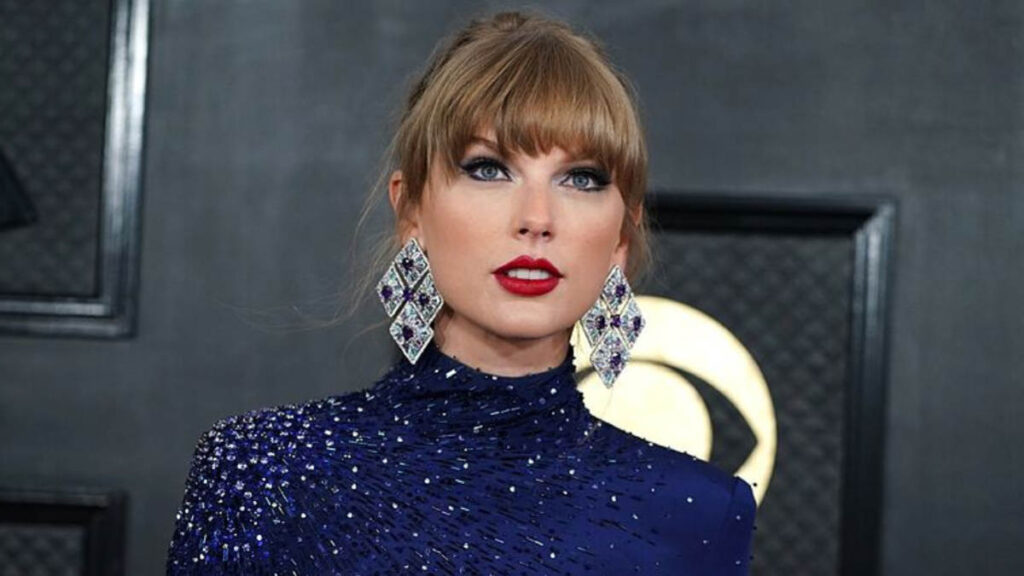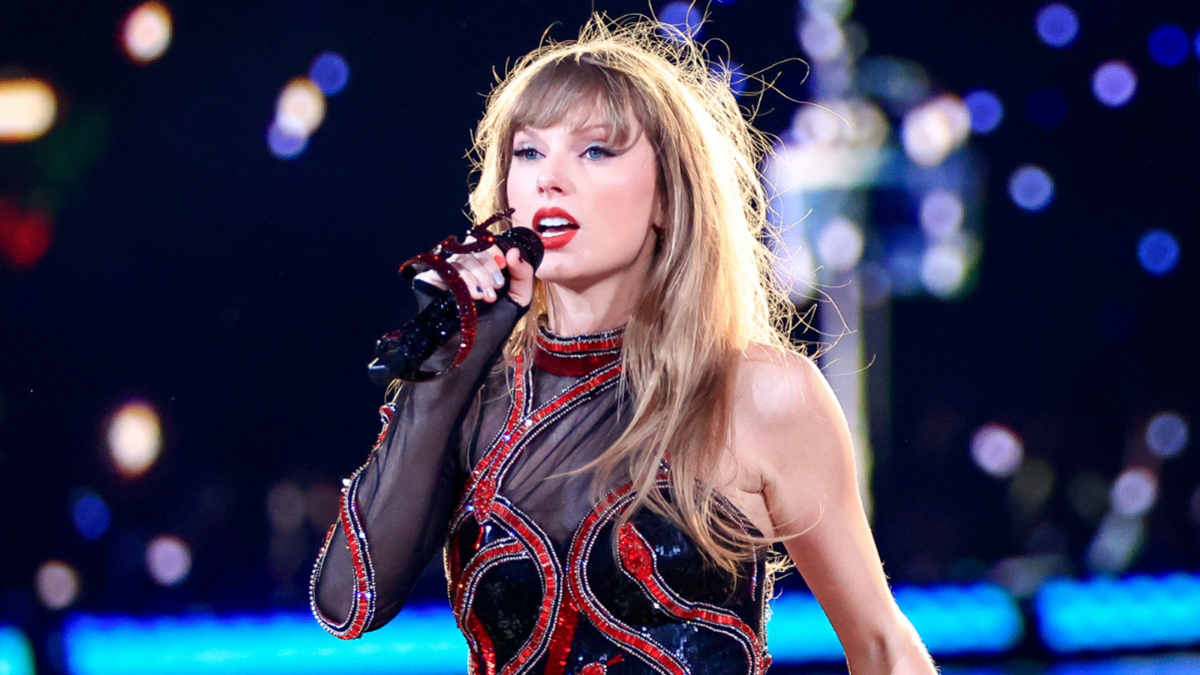In an industry where fame is fleeting and financial control is often out of an artist’s hands, Taylor Swift has done something extraordinary: she’s built a billion-dollar empire not just through talent, but through calculated reinvention and shrewd ownership. From her early days as a teenage country singer with a guitar and a dream, to headlining the most lucrative tour in music history, Swift’s financial journey mirrors a larger story about power in the entertainment world — who holds it, who gives it away, and who takes it back.
This article traces her net worth from her 2006 debut to her 2025 billionaire milestone, unpacking how she turned heartbreak into high returns and mastered battles into master plans. With timelines, comparisons, and a personal perspective, we’ll explore not just what she’s earned, but what it all means. Because Taylor Swift’s wealth isn’t just newsworthy. It’s a case study in modern creative capitalism.
The $1.14 Million Start: How a Teenage Taylor Entered the Spotlight (2006–2008)
When Taylor Swift signed with Big Machine Records in 2006 at just 16 years old, the label itself was brand new, and she was its first signed artist. Her debut album, Taylor Swift, didn’t storm the charts overnight, but it quietly built a foundation that would soon turn into a multimillion-dollar launchpad. By 2008, it had sold over 5 million copies — a staggering figure for a teenage newcomer in the declining CD era.
Her earnings at this stage were estimated at around $1.14 million, primarily from album royalties, publishing rights (as she was already writing her songs), and her first national tour, where she opened for established acts like Rascal Flatts. More than just a promising performer, Swift quickly showed herself to be a savvy songwriter with business instincts, retaining writing credits and asserting control over her creative voice. Even in these formative years, she wasn’t just playing the fame game. She was quietly building an empire.
Also See: Taylor Swift vs Beyoncé: Who Has the Bigger Net Worth in 2025?
From Country Star to Global Icon: The Exponential Rise (2009–2014)
Between 2009 and 2014, Taylor Swift’s career didn’t just take off — it ignited into something global, lucrative, and unprecedented for someone her age. This era saw her evolve from America’s country sweetheart into a pop powerhouse with worldwide reach. The momentum began with Fearless, which won Album of the Year at the Grammys and sold over 12 million copies globally. But it was Speak Now and Red that truly revealed the scale of her financial and cultural impact.
Swift’s Speak Now World Tour grossed over $123 million, and the Red Tour pulled in even more, cementing her as one of the top touring artists in the world. These weren’t just concerts — they were full-scale productions that turned fans into loyal consumers of not just music, but merch, VIP experiences, and brand partnerships.
Alongside touring, she signed lucrative endorsement deals with brands like CoverGirl, Sony, and Diet Coke — partnerships that felt authentic because they aligned with her carefully managed image. And behind the scenes, she was taking greater ownership of her publishing and mastering the long game: by writing nearly every song herself, she ensured long-term royalty streams.
What set Taylor apart during this era wasn’t just her marketability — it was her foresight. She was no longer just writing hit songs; she was architecting a brand that could scale globally, cross genres, and weather the shifting tides of the music industry.

The Billion-Dollar Pivot: Reputation, Masters, and a New Era of Ownership (2015–2019)
By 2015, Taylor Swift wasn’t just a superstar — she was a strategic force, making moves that would redefine artist ownership in the streaming age. Coming off the massive success of 1989, which sold over 10 million copies worldwide and won three Grammys, Swift’s net worth surged past $250 million. But it was her behind-the-scenes decisions — not just chart performance — that signaled a turning point.
With the 1989 World Tour grossing over $250 million, she proved she could out-earn entire industry sectors with a single production. Meanwhile, her public stand against Apple Music in 2015 over artist royalties led to the company changing its policy — a rare moment where a pop star reshaped the business practices of Silicon Valley.
In 2017, Reputation was her most polarizing yet profitable era. Though it broke from her traditional promotion model, it still sold over 2 million copies in the U.S. and launched another blockbuster tour. But the real pivot came in 2019, when Swift’s masters — the original recordings of her first six albums — were sold to Scooter Braun’s Ithaca Holdings in a deal she wasn’t consulted on. The move sparked widespread industry debate about artist rights, transparency, and equity.
Instead of conceding, Swift re-recorded her entire catalog, launching the Taylor’s Version series — a financial and symbolic play that allowed her to reclaim streaming and licensing revenue for years to come. It wasn’t just retaliation. It was a calculated investment in long-term control — one that reshaped her legacy and inspired a new generation of artists to value ownership over speed.
Her business savvy runs deep — explore Taylor Swift’s investment and brand strategy.
The Era of Empowerment: Folklore, Evermore, and the Pandemic Pivots (2020–2021)
When the world shut down in 2020, many artists paused — but Taylor Swift pivoted. Instead of waiting for arenas to reopen, she turned inward and delivered Folklore and Evermore, two surprise albums that showcased a quieter, more introspective version of her artistry. Released just months apart, these records were created remotely during lockdown, with stripped-down production and intimate collaborations — a creative shift that proved commercially brilliant.
Folklore broke streaming records, selling over 2 million units globally in its first week and becoming the best-selling album of 2020 in the U.S. It also won Album of the Year at the Grammys, reinforcing Swift’s artistic credibility while driving long-tail digital revenue. Without touring, she leaned into high-margin platforms: exclusive vinyl releases, fan-focused merchandise drops, and a Disney+ concert film (Folklore: The Long Pond Studio Sessions) that expanded her streaming footprint beyond music.
In an era where authenticity became currency, Swift’s vulnerability — paired with sharp distribution strategy — generated significant ROI. She didn’t just stay relevant during the pandemic; she expanded her financial and creative reach by embracing storytelling that resonated deeply, and monetizing it with quiet precision.
Also See: Taylor Swift’s Business Ventures: Brands, Investments & Their Worth
Touring Like No One Else: The Eras Tour and Billion-Dollar Impact (2022–2025)
By the time The Eras Tour kicked off in 2023, Taylor Swift wasn’t just performing — she was orchestrating one of the most financially successful live events in music history. Designed as a sweeping tribute to every phase of her career, the tour quickly became a cultural juggernaut and an economic marvel. With over 150 shows across five continents, The Eras Tour is projected to gross more than $1.4 billion, making it the highest-grossing tour of all time.
But the real genius wasn’t just in ticket sales — it was in the layered ecosystem Swift built around the tour. From exclusive merchandise (sold both online and on-site, with many fans spending hundreds per visit) to hotel partnerships, themed pop-ups, and local economic boosts dubbed the “Swift Effect,” every detail was engineered to generate emotional engagement and revenue. Even fans who couldn’t score tickets became part of the economy via livestreamed events, resale markets, and — most notably — Taylor Swift: The Eras Tour concert film, which earned over $260 million at the global box office. Distributed independently through AMC, it shattered records for concert films while allowing Swift to retain an unusually large share of profits.
More than a tour, this was a multimedia masterstroke — a culmination of decades-long branding, business discipline, and fan trust. With The Eras Tour, Swift didn’t just headline stadiums. She headlined an economy.
Want to know exactly what she earned per show? Read Taylor Swift’s earnings per Eras Tour show.
How Taylor Swift’s Fortune Stacks Up in the Music Industry
As of 2025, Taylor Swift’s net worth is estimated at over $1.6 billion, placing her in the elite company of global music titans — but what sets her apart isn’t just the number, it’s how she got there. Unlike Rihanna, whose $1.4 billion fortune is largely built through Fenty Beauty and fashion ventures, or Beyoncé, who balances music, film, and Ivy Park with meticulous creative control, Swift’s wealth is rooted squarely in music — and in owning her art.
She holds the rights to her publishing and is re-recording her original catalog to regain control of her masters — a rare and financially strategic move in an industry where artists often sign away long-term earnings early in their careers. She also benefits from writing nearly all of her songs, ensuring she profits from both performance and publishing royalties.
Drake, Ed Sheeran, and others may rival her in touring or streaming numbers, but few blend emotional brand loyalty, catalog value, and multiplatform storytelling like Swift. Her empire is built not just on popularity, but on ownership — and that’s what makes her one of the most self-made billionaires in music history.

What Following Swift’s Career Taught Me About Money and Ownership
I remember exactly where I was when Taylor announced she’d be re-recording her old albums. As a freelance writer and part-time musician, the news hit me in a way I didn’t expect — not just as a fan, but as someone who’s wrestled with creative ownership in my career. I’d signed away rights to work I’d poured myself into, all for the promise of exposure or a small check. Seeing someone at her level say, “No, I want it back,” gave me the courage to renegotiate a contract that didn’t serve me.
What’s always struck me about Taylor’s financial path is how quietly strategic she is. During the pandemic, when everything felt still and uncertain, Evermore arrived like a handwritten letter — soft, surprising, and deeply personal. It felt like a gift. And yet, even that emotional moment was part of a bigger business model built on connection and control.
She taught me that boundaries aren’t barriers — they’re leverage. And that owning your work isn’t just about pride. It’s about power.
TL;DR Timeline: Taylor Swift’s Net Worth by Year (2006–2025)
- 2006: $1 million — Signs with Big Machine Records; debut album release.
- 2009: $18 million — Fearless dominates charts; first headlining tour.
- 2012: $57 million — Red success; endorsement deals surge.
- 2015: $250 million — 1989 World Tour grosses $250M; fights for streaming royalties.
- 2018: $320 million — Reputation tour becomes highest-grossing U.S. tour.
- 2019: $360 million — Masters dispute sparks re-recording strategy.
- 2020: $400 million — Folklore and Evermore redefine digital-era success.
- 2023: $740 million — Eras Tour launches; record-breaking merch and ticket sales.
- 2024: $1.1 billion — Concert film and global tour elevate her to billionaire status.
- 2025: $1.6 billion — Catalog ownership and multi-platform ventures solidify her empire.
Taylor Swift’s Billion-Dollar Blueprint Isn’t Just Luck — It’s Intentional Legacy
Taylor Swift’s billion-dollar net worth isn’t the result of luck, timing, or viral fame — it’s the product of long-term vision, meticulous ownership, and a rare ability to turn personal storytelling into global enterprise. From controlling her publishing to re-recording her masters, every financial milestone has been rooted in principle, not impulse.
She’s built more than wealth — she’s built a blueprint for creative sustainability, showing that artistic integrity and business savvy aren’t mutually exclusive. And perhaps most importantly, she’s done it with a fanbase that feels like part of the journey, not just an audience.
Swift’s legacy isn’t just what she earned — it’s how she earned it. And for anyone watching from the sidelines, that’s the real value of her story.
For a categorized view of her assets and wealth sources, see Taylor Swift net worth 2025.
Mohit is a finance and entertainment writer specializing in celebrity wealth, brand strategy, and media empires. As Co-Founder of TheNetWorths.com, he brings over a decade of experience analyzing public income streams, endorsement deals, and the evolving creator economy.



















6 thoughts on “Taylor Swift’s Net Worth Over Time: From 2006 Debut to 2025”